Charlie Hebdo:
Nicht nur am 7. Januar 2015!
Lukas R.A. Wilde und Stephan Packard (Hrsg.)
Gesellschaft für Comicforschung (ComFor) e.V.
104 Seiten
Open Access
ISBN 978-3-0006-0367-9
Juli 2018
Charlie Hebdos Karikaturen und Comics und ihre weiteren satirischen Beiträge sind älter als die Anschläge am 7. Januar 2015 und haben sie überlebt: Sie gehen thematisch weiter, sind vielfältiger und aus mehr Perspektiven zu betrachten, als es nach jenem Januar in vielen Medien geschah. Diese Ausweitung der Perspektive in der vorliegenden Sammlung nimmt die Karikaturen, Comics und weiteren Formate in Charlie Hebdo in den Blick. Sie versteht diese als politisch im starken Sinne des Wortes: Indem sie genuin offene Fragen verhandeln, können sie in keinem einfachen Konsens, nicht einmal dem bindenden der Demokratie und der Kunst- und Meinungsfreiheit, auf deren Boden sie stehen, vollständig aufgehen.
Diese Sammlung geht aus der Auseinandersetzung innerhalb der Gesellschaft für Comicforschung direkt nach den Anschlägen hervor. Dabei entstand der Wunsch, mehrere verschiedene Stimmen zu Charlie Hebdo in einer ruhigeren, ausführlicheren und differenzierteren Weise sprechen zu lassen, als es damals gelang. Auch deshalb haben wir uns für diese Ausgabe sehr viel Zeit genommen. Sie ist gerade keine Antwort auf die feigen Morde vor drei Jahren, sondern Ausdruck eines Interesses an der Zeitschrift, das darüber hinausgeht. Die fleckigen Spuren auf dem Titelbild meinen daher Tinte.
Vollversion in Druck-Qualität herunterladen (29 MB)
Vollversion in Web-Qualität herunterladen (7,8 MB)
Inhalt:
Nicht nur am 7. Januar 2015:
Politische Karikaturen und Comics in Charlie Hebdo – Zur Einleitung
Catherine Michel und Stephan Packard
Artikel herunterladen (0,6 MB)
Ein Prophet ist keine Pfeife:
Charlie Hebdo und der Karikaturenstreit
Barbara Eder:
Der folgende Beitrag beschäftigt sich mit der Reaktion des französischen Satiremagazins Charlie Hebdo auf das politische Ereignis des Karikaturenstreits. Dieses wurde in Ausgabe 712 unter Rückgriff auf mehr als 18 satirische Zeichnungen kommentiert. Wegen angeblicher rassistischer Beleidigungen musste sich der damalige CH-Chefredakteur dafür in einem Prozess gegen den Dachverband der französischen Muslime verantworten. Im Artikel werden die Zeichnungen von Ausgabe 712 als Grundlage für eine semiotische Analyse herangezogen, die die Frage nach den subjektiven Bedingungen des Rezeptionsprozesses ebenso aufwirft wie jene nach der möglichen Reichweite des gezeichneten Witzes. Aus den betont selbst- und medienreflexiven CH-Karikaturen allein – so die These – lässt sich der Vorwurf einer gezielt betriebenen, rassistischen Verleumdung keineswegs ableiten. Die CH– Zeichner_innen karikieren in Ausgabe 712 nicht nur Sujets aus der muslimischen Welt, sondern sämtliche höchste Wesen aller Weltreligionen. Sprechpositionen von Menschen aus islamischen Herkunftsländern, die bislang marginalisiert worden waren, finden darin Beachtung. Mit dem Abdruck des Statements „Pour la liberté d´expression“ der „Association du Manifeste des libertés“ beziehen etwa in Frankreich lebende Atheist_innen in Ausgabe 712 erstmals Stellung zu den dänischen Karikaturen.
Artikel herunterladen (8,2 MB)
Humor ist eine ernste Sache:
Charlie Hebdo zeichnet und schreibt die Attentate des 7. Januars
Elisabeth Klar:
Die Attentate vom Januar 2015 stellen einen ebenso entsetzlichen wie entscheidenden Einschnitt in der Geschichte von Charlie Hebdo dar. Sie gehen mit Trauma, Verlust und gleichzeitig drastisch erhöhter medialer Aufmerksamkeit einher: einer verstärkten globalen Rezeption, die von Solidarisierung bis zu Verurteilung reicht. Die Zeitschrift publiziert nach dem 7. Januar 2015 kontinuierlich weiter, und vollzieht den Reflexionsprozess zu den Gewalttaten in ihren Texten und Karikaturen nach. Der folgende Artikel versucht nachzuzeichnen, wie die Gewalttaten und ihre Folgen in Charlie Hebdo während des Jahres 2015 besprochen werden; wie über Texte und Karikaturen Trauerarbeit geleistet, in diesem Kontext politische und gesellschaftliche Kritik verübt, und wie über Rezeption und ästhetische wie politische Möglichkeiten der Karikatur reflektiert wird. Ausgehend von dieser Analyse lässt sich auch eine ästhetisch-künstlerische wie politische Selbstdefinition der Zeitschrift skizzieren, die sich sowohl auf die Tradition und Geschichte der Zeitschrift rückbezieht als auch ständig neu verhandelt wird – und die den Leser_innen eine Position mit großer Verantwortung zuschreibt.
Artikel herunterladen (6 MB)
Charlie als Symbol oder L’Esprit Charlie?
L’après-Charlie in den autobiografischen Comics von Luz und Catherine Meurisse
Marie Schröer:
Nach den Attentaten wurde Charlie Hebdo zu einem Symbol, dessen verschiedene Gruppen sich mehr oder weniger plakativ bedienten. In einer der im Internet verbreiteten links-liberalen Lesarten wurde primär die Oberfläche betrachtet, d.h. die Wahrnehmung auf die kontextlose Sichtung der Titelkarikaturen
beschränkt, um CH zum beispielhaften Symptom eines hegemonialen und rassistischen Diskurses zu erklären, der zur weiteren Marginalisierung der (französischen) Muslime beitrage. Die entgegengesetzte Extremposition bestand darin, die CH-Mitarbeiter_innen zu Märtyrer_innen, die Zeitschrift zum Symbol für Freiheit zu verklären. Auch dabei wurde wenig über die eigentlichen Inhalte, Motivationen und Motive der Satire-Zeitung berichtet. In Folge werden diese Symbole daher dekonstruiert und der Blick anschließend auf die auto-biografischen Comics der überlebenden Redaktions-mitglieder Luz und Catherine Meurisse gerichtet: Zwei Stimmen einer ehemals vielstimmigen Redaktion, zwei Menschen hinter dem Mythos, zwei Variationen des Esprit Charlie.
Artikel herunterladen (4,6 MB)
Lachen über eine Tragödie:
Der Nahostkonflikt in Charlie Hebdo
Catherine Michel:
Der vorliegende Artikel beschäftigt sich mit der Thematisierung des Nahostkonflikts in der Zeitschrift Charlie Hebdo. Im Zentrum stehen Fragen rund um den Aktualitätsbezug, d.h. welche Ereignisse (nicht) aufgegriffen werden, die Verteilung der Beiträge auf Text und Bild, die Autorenschaft, d.h. welche Beiträger_innen sich mit der Thematik systematisch oder nur gelegentlich auseinandersetzen, und schließlich der Humor selbst, mit dem an dieses explosive Themenfeld herangegangen wird. Dafür muss kurz allgemein auf das Thema ‚Humor‘, die Vorgehensweise bei der Recherche für diesen Beitrag und das daraus resultierende Korpus eingegangen werden. Daran anschließend wird die eigentliche Auswertung der Text- und Bildbeiträge erfolgen; zunächst quantitativ hinsichtlich ihrer Verteilung auf Text und Bild, ihre Verteilung auf die einzelnen Epochen bzw. Publikationsjahre und auf die einzelnen Zeichner_innen/Autor_innen, und schließlich qualitativ, indem exemplarisch die Beitragsformen und deren Humor betrachtet werden.
Artikel herunterladen (12 MB)


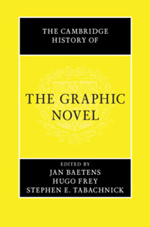

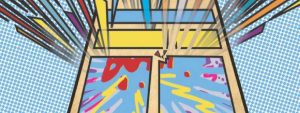 Vom 9. bis 11. August 2018 findet unter dem Motto „MIND THE GAPS! The Futures of the Field“ die erste Jahrestagung der Comics Studies Society (CSS) statt. Dort wird es auch ein Panel der
Vom 9. bis 11. August 2018 findet unter dem Motto „MIND THE GAPS! The Futures of the Field“ die erste Jahrestagung der Comics Studies Society (CSS) statt. Dort wird es auch ein Panel der 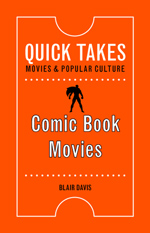
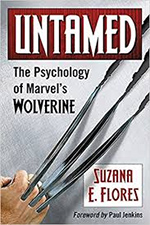
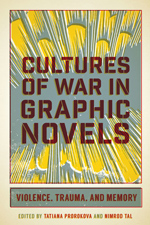
 Vom 15. bis 19. Juli 2018 findet in Krakau der „XIth Congress of the European Jewish Studies Association (EAJS)“ statt. Auf ebendiesem gibt es u.a. auch ein Panel zu „Jewish Women in Comics“, welches gemeinsam von Véronique Sina und Sarah Lightman organisiert wurde; moderiert wird das Panel wird von Kalina Kupczynska (Lodz).
Vom 15. bis 19. Juli 2018 findet in Krakau der „XIth Congress of the European Jewish Studies Association (EAJS)“ statt. Auf ebendiesem gibt es u.a. auch ein Panel zu „Jewish Women in Comics“, welches gemeinsam von Véronique Sina und Sarah Lightman organisiert wurde; moderiert wird das Panel wird von Kalina Kupczynska (Lodz).
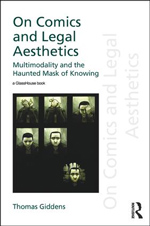
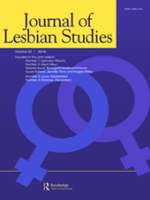
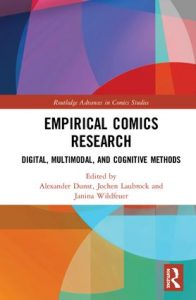 Soeben ist ein Sammelband zum Thema „Empirical Comics Research: Digital, Multimodal, and Cognitive Methods“ erschienen. Die englischsprachige Aufsatzsammlung wird von Routledge publiziert und ist von den deutschen Comicforscher_innen Alexander Dunst, Jochen Laubrock und Janina Wildfeuer herausgegeben worden.
Soeben ist ein Sammelband zum Thema „Empirical Comics Research: Digital, Multimodal, and Cognitive Methods“ erschienen. Die englischsprachige Aufsatzsammlung wird von Routledge publiziert und ist von den deutschen Comicforscher_innen Alexander Dunst, Jochen Laubrock und Janina Wildfeuer herausgegeben worden.